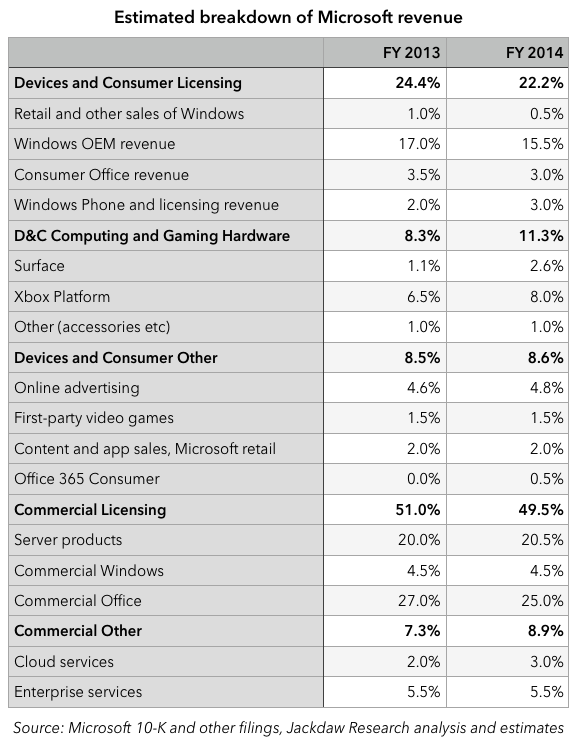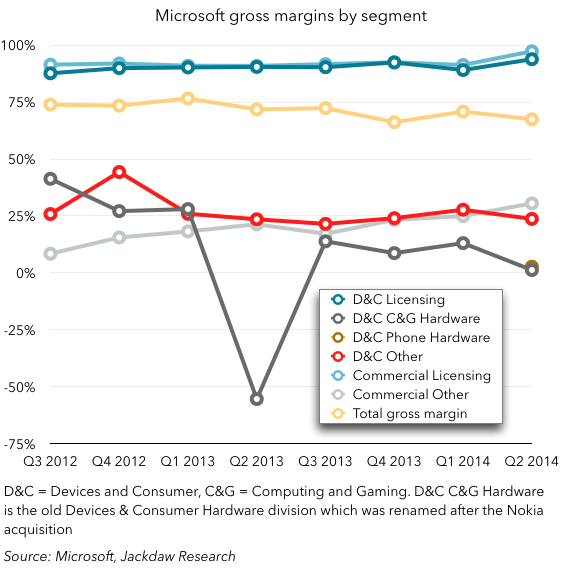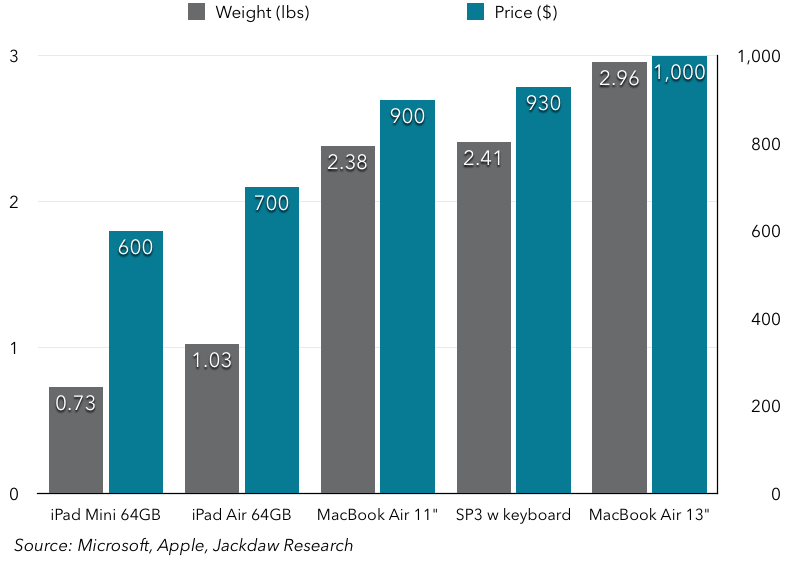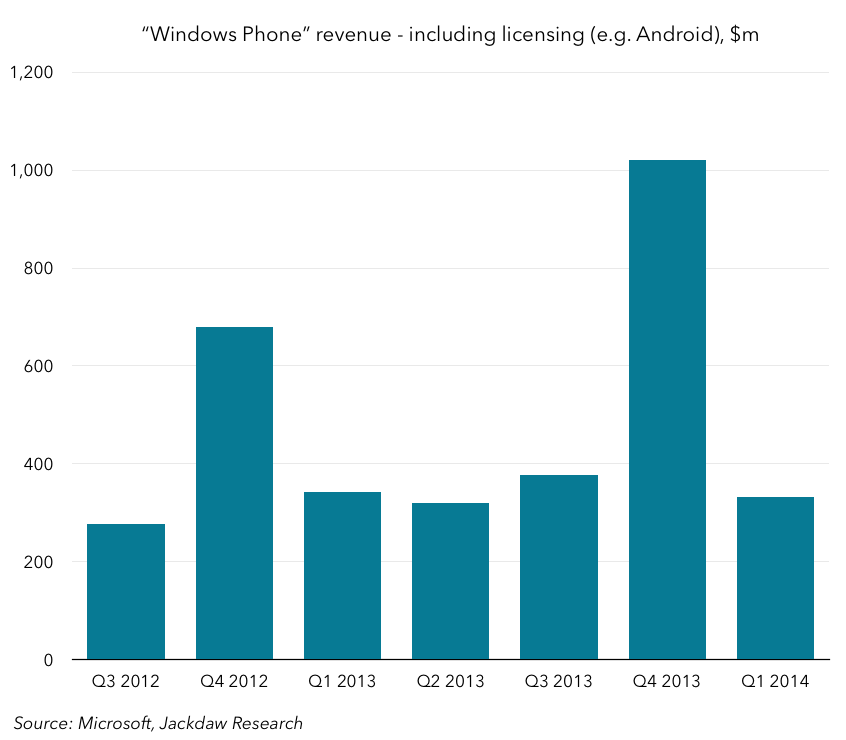Satya Nadella today wrote an email to Microsoft employees, which was simultaneously published on the Microsoft website. We’ve had glimpses and snippets of Nadella’s vision for Microsoft over the past several months, but this is the first time we’ve had the whole thing laid out in clear terms, and it marks something of a strategic break with the Ballmer era.
The most visible sign of this is the dismissal of “Devices and Services” as the descriptor of Microsoft’s strategy and mission. This was the vision Ballmer cooked up in his last couple of years at the company, as he sought to find a way forward for Microsoft in the face of serious threats to its two biggest businesses – productivity and operating systems. It did one thing well: recognized that operating systems would in future be monetized through hardware sales, and that productivity software would be monetized through services. But that was about as far as it went. Neither Ballmer nor anyone else at Microsoft ever really articulated how the two fit together, or how Microsoft would bridge the competing demands of providing the best services on any platform versus providing devices that offered truly differentiated experiences.
I do think the two could have been rationalized, as I’ve written elsewhere. Ultimately, a devices and services strategy properly executed would have meant creating really compelling services and then having Microsoft devices serve as the best possible instantiation of those services. But Microsoft was never really able to articulate that vision, and in the process created some really awkward questions for OEMs about why Microsoft was competing with its partners, first with the Surface and then with the Nokia devices acquisition. The fundamental problem, though, with Devices and Services as a strategy, was that it was never fleshed out, and thus was mostly a description of new business models for its two existing businesses, rather than a true vision for transforming Microsoft. It also never answered the question of what Microsoft was really about, or why it does what it does.
Satya Nadella’s new strategy replaces the Devices and Services pairing with another: Productivity and Platforms. On the surface, that could seem like a startlingly unoriginal vision for the Office and Windows company – more of the same. But drilling into what Nadella actually means by those two things shows that he has a much more expansive vision of what both terms signify, but one that’s rooted in the things Microsoft is good at. That’s a subtler shift, and we have yet to see the full implications of it. But it positions Microsoft as an enabler of its users, both enterprise and consumer, rather than a seller of devices and services, and that’s an important change, because it speaks to potential customers rather than merely to investors.
The other major implication of all this is a refocused Microsoft, one which sees “dual users” (a term that Microsoft uses to describe what others have called “prosumers”) as its target market. It’s in some ways an admission of defeat in the broader consumer market, and a statement that it’s going to focus on the narrower segment of people who see “getting things done” as a major reason to buy a personal device or use a consumer service. There certainly is a substantial segment of the population that views getting things done as important when selecting a device vendor or online service, but I suspect it’s a minority.
The other challenge is that, as Microsoft has been broadly absent from the smartphone and tablet markets for the last several years, people have found plenty of other ways to get things done without Microsoft’s help. Given its slow response to the demand for Office on the iPad, for example, it now faces much more of an uphill battle than it would have done had it embraced that opportunity before many alternatives moved in to fill the void. The same applies to many other domains where Microsoft has lost a step over the last few years.
Where Microsoft seems much better placed is in the broader platforms business, beyond traditional device-based operating systems, in what Nadella calls “Cloud OS” in his email. Microsoft was the only one of the big three consumer technology companies to split its developer conference keynote into two, and it did it to focus almost entirely on this opportunity in the second part. With Azure at the center, Microsoft is building a truly device- and platform-independent set of cloud services and infrastructure for developers, and doing well at it. But this revenue stream today is a small fraction of Microsoft’s overall revenues, at a couple of billion dollars a quarter across both its Enterprise and Cloud services businesses. Cloud Services itself – which also includes Enterprise Office 365 revenues – is smaller than Microsoft’s online advertising revenue, though growing much more quickly.
One upshot of all this is that we may be looking at a smaller Microsoft over time. Last quarter, Microsoft’s revenues actually shrank year on year for the first time in a couple of years. If Microsoft yields much of the consumer market to competitors while focusing on a narrower segment, it could see revenue declines in some historical areas along with smaller growth in the new areas it’s successful in. But once it crosses the chasm from its historical highs to a new, refocused business, it should be set for better growth again. At least Nadella seems to be seeing Microsoft’s strengths and weaknesses clearly and taking steps to reshape the company in the right mold. There are also hints towards the end of the email about efficiency, streamlining and flattening in the organization, which could be read innocuously as having the same team operate more efficiently but could also be seen as an indication that some cuts may be coming.
Lastly, it’s interesting to see the word “privacy” pop up four times in the email, and particularly interesting in the context of the fact that it was never uttered during the keynotes at Build (security was mentioned, in the context of the enterprise). This was a recurring theme at Apple’s WWDC, and although Microsoft’s Scroogled campaigns arguably haven’t been that effective, there seems to be a sense at both Apple and Microsoft that privacy can be an effective competitive vector against Google if done right.
Nadella still hasn’t given us many specifics in terms of what this will all mean for new products and services at Microsoft. But he has now at least given us the framework for thinking about where Microsoft might go next, and how it sees its mission in the world. That’s going to give the company some valuable direction and focus following several years of seeming a bit lost. But as with any strategy, the devil is in the execution, and we’ve seen very little of how Nadella will deliver on that yet.



